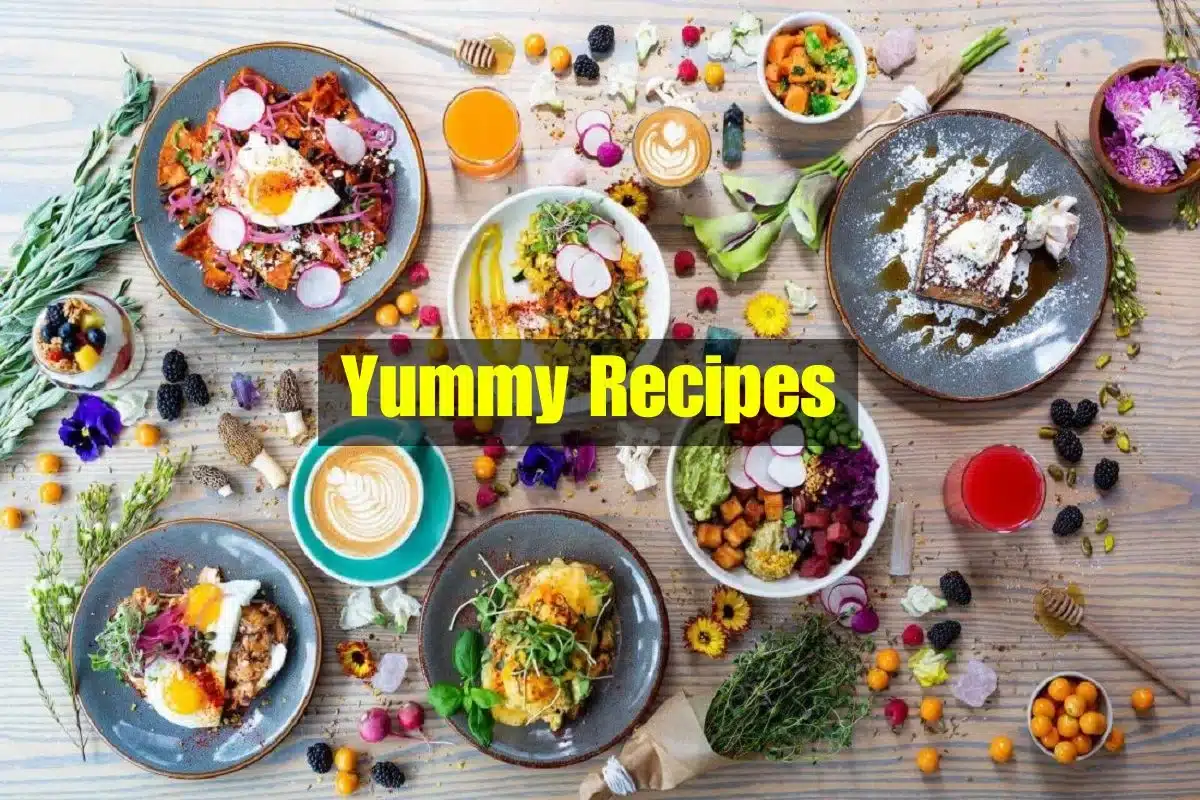Uncover the healing advantages of gardening through these DIY garden projects and delicious recipes. This piece offers creative inspiration and straightforward guidance for fashioning an exquisite and nourishing garden.
Gardening surpasses mere pastime; it can function as a therapeutic pursuit that enriches both your mental and physical well-being. It permits a reconnection with the natural world, fosters physical activity, and allows the creation of something aesthetically pleasing. Enter the realm of Garden Therapy DIY Garden Projects Yummy Recipes Crafty Goodness.
The process of planting and tending to your garden can be a meditative and calming experience. Witnessing your plants flourish can be immensely gratifying, lifting your spirits and boosting your self-assurance. This composition delves into the realm of garden therapy, encompassing DIY garden initiatives, mouthwatering recipes, and artistic endeavors, all of which converge to help you fashion a delightful and nurturing sanctuary.
Definition of Garden Therapy
Garden therapy, often referred to as horticultural therapy, encompasses a holistic and therapeutic approach to healing and well-being. It revolves around engaging with the natural world through gardening activities to promote physical, mental, and emotional health. At its core, garden therapy recognizes the powerful connection between humans and nature, harnessing the healing properties of plants, outdoor environments, and the act of gardening itself.
It serves as a versatile therapeutic tool, benefiting individuals of all ages and backgrounds by reducing stress, improving mood, enhancing physical fitness, and providing a sense of accomplishment and purpose. Whether in the form of cultivating a personal garden space or participating in communal gardening projects, garden therapy fosters a deeper appreciation for nature and offers a path towards greater overall well-being.
Importance of Connecting with Nature
The importance of connecting with nature cannot be overstated in our increasingly fast-paced and urbanized world. It is a fundamental human need that transcends cultural and geographical boundaries. Nature provides us with a profound sense of wonder and tranquility, offering respite from the stresses of modern life. The act of connecting with nature can rejuvenate our spirits, reduce stress and anxiety, and enhance our overall mental and physical well-being.
It fosters a deeper appreciation for the environment and encourages responsible stewardship of our planet. Moreover, this connection is a reminder of our interconnectedness with all living beings, reinforcing the need for conservation and sustainable living practices. Whether through a leisurely walk in the woods, tending to a garden, or simply gazing at a starry night sky, the importance of connecting with nature is an integral part of the human experience, enriching our lives in countless ways.
The Benefits of Garden Therapy
Garden therapy offers a wide array of advantages that positively impact individuals’ physical, mental, and emotional well-being. Here are some key benefits associated with engaging in garden therapy:
Stress Reduction:
Spending time in a garden setting can significantly reduce stress levels. The tranquil ambiance and soothing sounds of nature create a calming environment that promotes relaxation and alleviates stress. Gardening activities provide a healthy escape from the pressures of daily life, enabling individuals to focus on the present moment and find inner peace.
Physical Activity:
Gardening involves a variety of physical tasks like digging, planting, weeding, and watering. These activities offer an excellent form of exercise that engages the body’s muscles, enhances flexibility, and improves coordination. Regular physical engagement in gardening can lead to increased strength, enhanced cardiovascular health, and improved overall fitness.
Connection with Nature:
Garden therapy facilitates a profound connection with the natural world, fostering a sense of harmony and unity with the environment. Surrounded by plants, flowers, and the beauty of nature, individuals experience a grounding sensation that deepens their connection to the world around them. This connection allows for a greater appreciation of the wonders of the natural world.
Mental Well-Being:
Engaging in garden therapy positively impacts mental health. Nurturing and caring for plants can instill a sense of purpose and achievement, thereby boosting self-esteem and confidence. Gardening also encourages mindfulness as individuals focus on the here and now while tending to their plants. This mindfulness practice can reduce anxiety, enhance concentration, and improve overall mental well-being.
Therapeutic Effects:
Garden therapy is recognized for its therapeutic effects, particularly for individuals dealing with various challenges, including physical or mental health conditions. It has been demonstrated to aid in the recovery process, enhance cognitive abilities, and elevate overall quality of life. The combination of meaningful activities, exposure to a natural environment, and sensory stimulation in the garden contribute to these therapeutic benefits.
Social Interaction:
Gardens often serve as communal spaces, offering opportunities for individuals to connect and engage with others who share a passion for gardening. Participating in garden therapy can foster social interaction, creating a sense of community and belonging. Joining gardening clubs, attending workshops, or participating in community gardening projects allows individuals to exchange knowledge, and ideas, and form meaningful connections with like-minded individuals.
Read More: Fit Bottomed Eats Being a Foodie with a Fit Booty
DIY Garden Projects
Benefits of Gardening for Mental and Physical Health
Engaging in gardening activities has been linked to numerous health benefits, including stress reduction, increased physical activity, improved cognitive function, and a sense of accomplishment.
Selecting the Perfect Location for Your Garden
Choosing the right location for your garden is crucial. Factors such as sunlight, soil quality, and accessibility play a role in determining the success of your garden therapy endeavors.
Choosing Plants and Flowers for Your Garden
Selecting plants and flowers that resonate with you and your gardening goals can enhance the therapeutic experience. Different plants offer various benefits, from aromatherapy to attracting pollinators.
Step-by-Step Guide to Creating a Garden
- Soil Preparation: Proper soil preparation is essential for healthy plant growth. We’ll delve into soil testing, amending, and creating the ideal growing environment.
- Planting: Learn the techniques for planting seeds, seedlings, and bulbs to ensure strong, healthy plants.
- Watering and Maintenance: Discover the art of watering, weeding, and maintaining your garden to keep it thriving throughout the seasons.
Creative Garden Design Ideas
Designing your garden thoughtfully can make it an oasis of tranquility and beauty. We’ll explore design principles and ideas to help you create a garden that suits your style and therapeutic needs.
Upcycling and Repurposing in the Garden
Explore sustainable gardening practices by repurposing everyday items for use in your garden. This eco-friendly approach not only adds character but also reduces waste.
Tips for Sustainable Gardening
Learn how to minimize your environmental impact by practicing sustainable gardening techniques. We’ll cover topics such as composting, organic pest control, and water conservation.
In the next sections, we’ll continue to delve into the world of garden therapy, exploring yummy recipes and crafty goodness that can complement your gardening journey.
Read Also: A Fit Philosophy Healthy Gluten Free Easy Recipes
Yummy Recipes

Using Homegrown Produce in Cooking
Utilizing the fruits, vegetables, and herbs you grow in your garden can elevate your culinary experiences. Fresh, homegrown produce adds flavor and nutrition to your meals and connects you directly with the food you eat.
Garden-to-Table Cooking Benefits
The garden-to-table approach is more than just a trend; it’s a lifestyle that promotes healthy eating and sustainability. Discover the benefits of cooking with ingredients straight from your garden, from increased flavor to reduced environmental impact.
Seasonal Recipes
- Spring Recipes: As nature awakens, your garden bursts with vibrant colors and flavors. Explore recipes that showcase the first harvest of the year, including dishes featuring tender greens, early herbs, and springtime fruits.
- Summer Recipes: Summer brings an abundance of produce, from juicy tomatoes to sweet berries. Learn how to make the most of your garden’s bounty with delicious, sun-kissed recipes perfect for picnics and barbecues.
- Fall Recipes: Embrace the harvest season with recipes that highlight the rich, earthy flavors of autumn. Discover comforting dishes featuring pumpkins, squashes, and hearty herbs.
- Winter Recipes: Even in the colder months, your garden can provide ingredients for warming soups, stews, and root vegetable-based dishes. Find inspiration for nourishing meals that celebrate the winter garden.
Incorporating Herbs and Edible Flowers
Herbs and edible flowers are not only beautiful additions to your garden but also enhance your culinary creations. Explore creative ways to incorporate herbs and edible flowers into your dishes, from aromatic herb-infused oils to stunning floral garnishes.
Preserving Garden Produce
Extend the enjoyment of your garden’s bounty by learning how to preserve it for later use. We’ll cover various preservation methods, including canning, freezing, drying, and making flavorful jams and pickles.
Hosting Garden Gatherings and Potlucks
Share your garden’s delights with friends and family by hosting garden gatherings and potlucks. We’ll provide tips for planning and hosting successful outdoor events, including recipes that showcase your homegrown ingredients.
In the following section, we’ll dive into the world of crafty goodness, where you can explore creative projects that further enhance your garden therapy experience.
Crafty Goodness
Crafting is a delightful way to complement your garden therapy journey. In this section, we’ll explore the therapeutic benefits of crafting and offer a range of creative projects that can enhance your connection with nature.
Therapeutic Benefits of Crafting
Crafting is not just a pastime; it’s a therapeutic and meditative practice that can reduce stress, improve focus, and boost creativity. Engaging in craft projects can provide a sense of accomplishment and relaxation, making it a perfect companion to garden therapy.
DIY Garden Crafts
- Garden Decorations: Create personalized garden decorations that reflect your unique style. From wind chimes and garden art to garden gnomes, there are endless possibilities to adorn your outdoor space.
- Plant Markers and Labels: Keep your garden organized and visually appealing with DIY plant markers and labels. Get creative with materials and designs to add a personal touch to your garden beds.
- Outdoor Furniture: Craft your own outdoor furniture pieces to create cozy corners for relaxation within your garden oasis. Explore simple woodworking or repurposing projects to make benches, tables, and seating areas.
Creative Projects Using Natural Materials
Harness the beauty of natural materials found in your garden to create unique crafts. From pressed flower art and leaf prints to driftwood sculptures, these projects will inspire your creativity while fostering a deeper connection to nature.
Craft Ideas for Kids and Families
Involve the whole family in your garden therapy experience. Discover kid-friendly craft ideas that encourage children to explore nature, develop their creativity, and bond with loved ones through crafting.
Seasonal Craft Projects
- Holiday Decorations: Embrace the festive spirit by crafting holiday decorations that incorporate elements from your garden. From Christmas wreaths adorned with pine cones and holly to Halloween lanterns with carved pumpkins, there are endless possibilities.
- Seasonal Wreaths: Create seasonal wreaths for your front door or garden gate. Learn how to use a variety of garden materials and seasonal themes to craft wreaths that celebrate the changing seasons.
Selling Your Garden Crafts
If you find joy in crafting and have a surplus of garden-inspired creations, consider selling them. We’ll provide tips and guidance on how to turn your crafting hobby into a small business, whether it’s through local markets, online platforms, or artisan fairs.
By incorporating these crafty goodness ideas into your garden therapy journey, you can deepen your connection with nature, enhance your well-being, and infuse your garden with a personal touch that reflects your creativity and passion.
Conclusion
Garden Therapy Diy Garden Projects Yummy Recipes Crafty Goodness opens the door to a host of well-being advantages. Whether it’s crafting vertical or herb gardens, crafting garden-to-table dishes, or immersing yourself in artistic endeavors such as pressed flower art or jewelry crafting, these activities offer a chance to forge a connection with nature, tap into your imaginative side, and discover inner tranquility.
Hence, commence your garden therapy voyage right away, and feel free to share your experiences and insights in the comments section below. Let’s inspire and bolster one another as we embark on this delightful journey of self-care and creative bliss!
Frequently Asked Questions (FAQs)
Here are answers to some frequently asked questions about “Garden Therapy DIY Garden Projects Yummy Recipes Crafty Goodness”:
What is garden therapy, and how does it benefit well-being?
Garden therapy, also known as horticultural therapy, is a holistic approach that involves engaging with nature through gardening activities. It offers various mental, physical, and emotional benefits, including stress reduction, improved mood, physical exercise, and enhanced mental well-being.
How can DIY garden projects contribute to garden therapy?
DIY garden projects allow individuals to immerse themselves in the creative process of crafting and maintaining their gardens. These projects provide a sense of accomplishment, promote mindfulness, and deepen the connection with nature, all of which are central to garden therapy.
What kinds of yummy recipes are suitable for garden therapy enthusiasts?
Yummy recipes for garden therapy can range from using homegrown produce in dishes to creating seasonal recipes that incorporate garden-fresh ingredients. These recipes enhance the therapeutic experience by connecting individuals to the food they cultivate and consume.
How can crafty goodness complement garden therapy?
Crafty goodness involves engaging in creative projects using natural materials, crafting garden decorations, and more. These activities provide a creative outlet that aligns with the meditative aspects of garden therapy, fostering relaxation and self-expression.
Are there any specific tips for sustainable gardening within the context of garden therapy?
Yes, sustainable gardening is an integral part of garden therapy. Tips for sustainable gardening include composting, practicing organic pest control, conserving water, and choosing eco-friendly gardening practices to minimize environmental impact.
Can garden therapy be beneficial for children and families?
Absolutely! Garden therapy is suitable for individuals of all ages, including children and families. It can be a bonding experience that teaches children about nature, responsibility, and creativity. Gardening and crafting in the garden can be enjoyable family activities.
















Comments are closed.